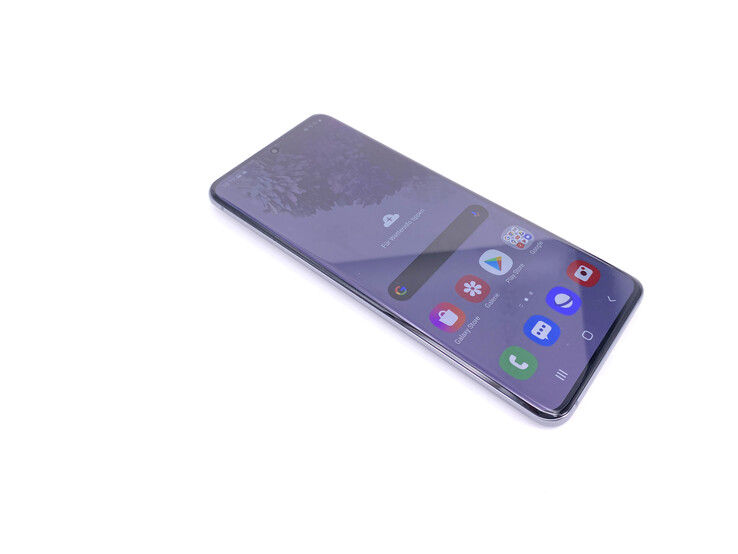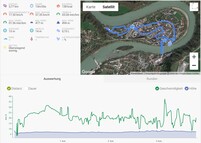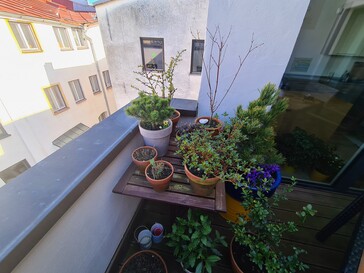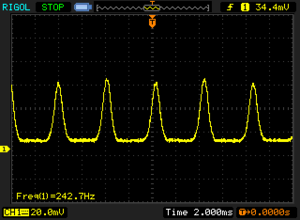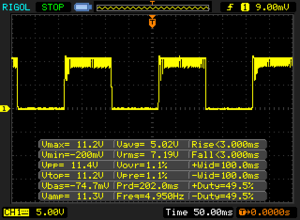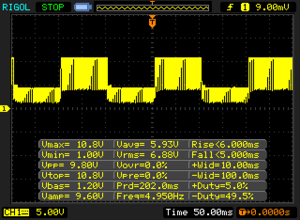Breve Análise do Smartphone Samsung Galaxy S20 – Smartphone de alta qualidade com peculiaridades
Comparison Devices
Avaliação | Data | Modelo | Peso | Unidade | Size | Resolução | Preço |
|---|---|---|---|---|---|---|---|
| 87.7 % v7 (old) | 03/2020 | Samsung Galaxy S20 Exynos 990, Mali-G77 MP11 | 163 g | 128 GB UFS 3.0 Flash | 6.20" | 3200x1440 | |
| 86.5 % v7 (old) | 09/2019 | Apple iPhone 11 A13 Bionic, A13 Bionic GPU | 194 g | 64 GB SSD | 6.10" | 1792x828 | |
| 87.4 % v7 (old) | 03/2019 | Samsung Galaxy S10 Exynos 9820, Mali-G76 MP12 | 157 g | 128 GB UFS 2.1 Flash | 6.10" | 3040x1440 | |
| 85.8 % v7 (old) | 10/2019 | OnePlus 7T SD 855+, Adreno 640 | 190 g | 128 GB UFS 3.0 Flash | 6.55" | 2400x1080 | |
| 89 % v7 (old) | 12/2019 | Huawei Mate 30 Pro Kirin 990, Mali-G76 MP16 | 198 g | 256 GB UFS 3.0 Flash | 6.53" | 2400x1176 | |
| 83.3 % v7 (old) | 12/2019 | Xiaomi Mi Note 10 SD 730G, Adreno 618 | 208 g | 128 GB UFS 2.0 Flash | 6.47" | 2340x1080 |
Os Top 10
» Os Top 10 Portáteis Multimídia
» Os Top 10 Portáteis de Jogos
» Os Top 10 Portáteis Leves para Jogos
» Os Top 10 Portáteis Acessíveis de Escritório/Empresariais
» Os Top 10 Portáteis Premium de Escritório/Empresariais
» Os Top 10 dos Portáteis Workstation
» Os Top 10 Subportáteis
» Os Top 10 Ultrabooks
» Os Top 10 Conversíveis
» Os Top 10 Tablets
» Os Top 10 Smartphones
» A melhores Telas de Portáteis Analisadas Pela Notebookcheck
» Top 10 dos portáteis abaixo dos 500 Euros da Notebookcheck
» Top 10 dos Portáteis abaixo dos 300 Euros
Size Comparison
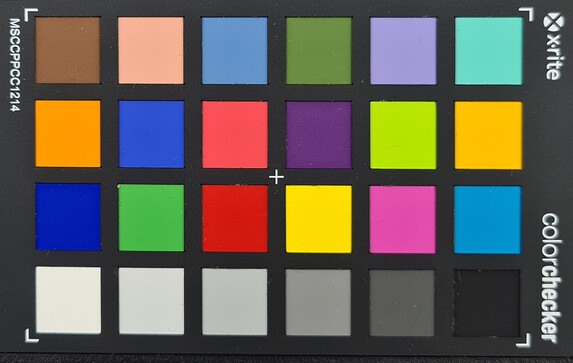
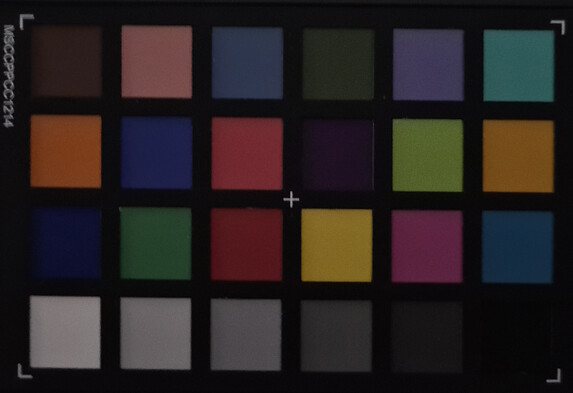
| |||||||||||||||||||||||||
iluminação: 97 %
iluminação com acumulador: 745 cd/m²
Contraste: ∞:1 (Preto: 0 cd/m²)
ΔE ColorChecker Calman: 2.67 | ∀{0.5-29.43 Ø4.78}
ΔE Greyscale Calman: 2 | ∀{0.09-98 Ø5}
99.8% sRGB (Calman 2D)
Gamma: 2.092
CCT: 6240 K
| Samsung Galaxy S20 AMOLED, 3200x1440, 6.2" | Apple iPhone 11 IPS, 1792x828, 6.1" | Samsung Galaxy S10 OLED, 3040x1440, 6.1" | OnePlus 7T AMOLED, 2400x1080, 6.6" | Huawei Mate 30 Pro OLED, 2400x1176, 6.5" | Xiaomi Mi Note 10 AMOLED, 2340x1080, 6.5" | |
|---|---|---|---|---|---|---|
| Screen | 23% | -25% | -24% | -14% | -44% | |
| Brightness middle (cd/m²) | 745 | 679 -9% | 701 -6% | 693 -7% | 592 -21% | 625 -16% |
| Brightness (cd/m²) | 740 | 671 -9% | 705 -5% | 703 -5% | 605 -18% | 607 -18% |
| Brightness Distribution (%) | 97 | 93 -4% | 98 1% | 96 -1% | 96 -1% | 89 -8% |
| Black Level * (cd/m²) | 0.68 | |||||
| Colorchecker dE 2000 * | 2.67 | 0.8 70% | 3.7 -39% | 3.42 -28% | 2.5 6% | 4.38 -64% |
| Colorchecker dE 2000 max. * | 4.52 | 2.4 47% | 10.3 -128% | 6.12 -35% | 5.5 -22% | 6.83 -51% |
| Greyscale dE 2000 * | 2 | 1.1 45% | 1.4 30% | 3.3 -65% | 2.6 -30% | 4.1 -105% |
| Gamma | 2.092 105% | 2.24 98% | 2.1 105% | 2.265 97% | 2.16 102% | 2.251 98% |
| CCT | 6240 104% | 6610 98% | 6553 99% | 6799 96% | 6173 105% | 7251 90% |
| Contrast (:1) | 999 |
* ... menor é melhor
Cintilação da tela / PWM (modulação por largura de pulso)
| Tela tremeluzindo/PWM detectado | 242.7 Hz | ||
A luz de fundo da tela pisca em 242.7 Hz (pior caso, por exemplo, utilizando PWM) . A frequência de 242.7 Hz é relativamente baixa, portanto, usuários sensíveis provavelmente notarão cintilação e sentirão fadiga ocular na configuração de brilho indicada e abaixo. [pwm_comparison] Em comparação: 53 % de todos os dispositivos testados não usam PWM para escurecer a tela. Se PWM foi detectado, uma média de 8108 (mínimo: 5 - máximo: 343500) Hz foi medida. | |||
Exibir tempos de resposta
| ↔ Tempo de resposta preto para branco | ||
|---|---|---|
| 6 ms ... ascensão ↗ e queda ↘ combinadas | ↗ 3 ms ascensão | |
| ↘ 3 ms queda | ||
| A tela mostra taxas de resposta muito rápidas em nossos testes e deve ser muito adequada para jogos em ritmo acelerado. Em comparação, todos os dispositivos testados variam de 0.1 (mínimo) a 240 (máximo) ms. » 17 % de todos os dispositivos são melhores. Isso significa que o tempo de resposta medido é melhor que a média de todos os dispositivos testados (20.2 ms). | ||
| ↔ Tempo de resposta 50% cinza a 80% cinza | ||
| 11 ms ... ascensão ↗ e queda ↘ combinadas | ↗ 6 ms ascensão | |
| ↘ 5 ms queda | ||
| A tela mostra boas taxas de resposta em nossos testes, mas pode ser muito lenta para jogadores competitivos. Em comparação, todos os dispositivos testados variam de 0.165 (mínimo) a 636 (máximo) ms. » 23 % de todos os dispositivos são melhores. Isso significa que o tempo de resposta medido é melhor que a média de todos os dispositivos testados (31.6 ms). | ||
| PCMark for Android | |
| Work performance score (classificar por valor) | |
| Samsung Galaxy S20 | |
| Samsung Galaxy S10 | |
| OnePlus 7T | |
| Huawei Mate 30 Pro | |
| Xiaomi Mi Note 10 | |
| Média Samsung Exynos 990 (13627 - 14760, n=5) | |
| Work 2.0 performance score (classificar por valor) | |
| Samsung Galaxy S20 | |
| Samsung Galaxy S10 | |
| OnePlus 7T | |
| Huawei Mate 30 Pro | |
| Xiaomi Mi Note 10 | |
| Média Samsung Exynos 990 (10008 - 11784, n=5) | |
| AnTuTu v8 - Total Score (classificar por valor) | |
| Samsung Galaxy S20 | |
| Huawei Mate 30 Pro | |
| Xiaomi Mi Note 10 | |
| Média Samsung Exynos 990 (296746 - 527820, n=5) | |
| Basemark GPU 1.1 | |
| 1920x1080 Vulkan Medium Offscreen (classificar por valor) | |
| Samsung Galaxy S20 | |
| Samsung Galaxy S10 | |
| Huawei Mate 30 Pro | |
| Xiaomi Mi Note 10 | |
| Média Samsung Exynos 990 (71.4 - 71.6, n=2) | |
| Vulkan Medium Native (classificar por valor) | |
| Samsung Galaxy S20 | |
| Samsung Galaxy S10 | |
| Huawei Mate 30 Pro | |
| Xiaomi Mi Note 10 | |
| Média Samsung Exynos 990 (42.3 - 63, n=2) | |
| 1920x1080 OpenGL Medium Offscreen (classificar por valor) | |
| Samsung Galaxy S20 | |
| Samsung Galaxy S10 | |
| Huawei Mate 30 Pro | |
| Xiaomi Mi Note 10 | |
| Média Samsung Exynos 990 (84.1 - 85.6, n=2) | |
| VRMark - Amber Room (classificar por valor) | |
| Samsung Galaxy S20 | |
| Huawei Mate 30 Pro | |
| Xiaomi Mi Note 10 | |
| Média Samsung Exynos 990 (4607 - 4957, n=3) | |
| Jetstream 2 - 2.0 Total Score | |
| Média da turma Smartphone (23.8 - 387, n=149, últimos 2 anos) | |
| Apple iPhone 11 (Safari Mobile 13.0) | |
| Huawei Mate 30 Pro (Chrome 78) | |
| OnePlus 7T (Chrome 76) | |
| Samsung Galaxy S20 (Chrome 80) | |
| Média Samsung Exynos 990 (50.6 - 56.8, n=5) | |
| Xiaomi Mi Note 10 (Chrome 78) | |
| JetStream 1.1 - Total Score | |
| Apple iPhone 11 (Safari Mobile 13.0) | |
| OnePlus 7T (Chrome 76) | |
| Huawei Mate 30 Pro (Chrome 78) | |
| Samsung Galaxy S20 (Chrome 80) | |
| Média Samsung Exynos 990 (89.3 - 96.2, n=5) | |
| Samsung Galaxy S10 (Samsung Browser 9.0) | |
| Xiaomi Mi Note 10 (Chrome 78) | |
| Speedometer 2.0 - Result 2.0 | |
| Média da turma Smartphone (15.2 - 643, n=122, últimos 2 anos) | |
| Apple iPhone 11 (Safari Mobile 13.0) | |
| Huawei Mate 30 Pro (Chrome 78) | |
| OnePlus 7T (Chome 76) | |
| Média Samsung Exynos 990 (50.8 - 64.4, n=4) | |
| Samsung Galaxy S10 (Samsung Browser 9.0) | |
| Samsung Galaxy S20 (Chome 80) | |
| Xiaomi Mi Note 10 (Chrome 78) | |
| WebXPRT 3 - Overall | |
| Apple iPhone 11 (Safari Mobile 13.0) | |
| Média da turma Smartphone (38 - 380, n=31, últimos 2 anos) | |
| Huawei Mate 30 Pro (Chrome 78) | |
| OnePlus 7T (Chrome 76) | |
| Samsung Galaxy S20 (Chrome 80) | |
| Média Samsung Exynos 990 (86 - 102, n=5) | |
| Xiaomi Mi Note 10 (Chrome 78) | |
| Octane V2 - Total Score | |
| Média da turma Smartphone (2228 - 121337, n=197, últimos 2 anos) | |
| Apple iPhone 11 (Safari Mobile 13.0) | |
| OnePlus 7T (Chrome 76) | |
| Huawei Mate 30 Pro (Chrome 78) | |
| Samsung Galaxy S10 (Samsung Browser 9.0) | |
| Média Samsung Exynos 990 (18094 - 20022, n=5) | |
| Samsung Galaxy S20 (Chrome 80) | |
| Xiaomi Mi Note 10 (Chrome 78) | |
| Mozilla Kraken 1.1 - Total | |
| Xiaomi Mi Note 10 (Chrome 78) | |
| Samsung Galaxy S20 (Chrome 80) | |
| Média Samsung Exynos 990 (2294 - 2511, n=5) | |
| OnePlus 7T (Chrome 76) | |
| Huawei Mate 30 Pro (Chrome 78) | |
| Samsung Galaxy S10 (Samsung Browser 9.0) | |
| Média da turma Smartphone (257 - 28190, n=154, últimos 2 anos) | |
| Apple iPhone 11 (Safari Mobile 13.0) | |
* ... menor é melhor
| Samsung Galaxy S20 | Samsung Galaxy S10 | OnePlus 7T | Huawei Mate 30 Pro | Xiaomi Mi Note 10 | Média 128 GB UFS 3.0 Flash | Média da turma Smartphone | |
|---|---|---|---|---|---|---|---|
| AndroBench 3-5 | -35% | -45% | 7% | -57% | -6% | 78% | |
| Sequential Read 256KB (MB/s) | 1542 | 832 -46% | 1406 -9% | 1781 15% | 480.5 -69% | 1520 ? -1% | 2228 ? 44% |
| Sequential Write 256KB (MB/s) | 670 | 193.2 -71% | 218.4 -67% | 401.8 -40% | 243.6 -64% | 546 ? -19% | 1852 ? 176% |
| Random Read 4KB (MB/s) | 205.3 | 137.4 -33% | 170.1 -17% | 226.4 10% | 106.2 -48% | 206 ? 0% | 296 ? 44% |
| Random Write 4KB (MB/s) | 228.1 | 24.44 -89% | 29.9 -87% | 259.2 14% | 118.9 -48% | 193.9 ? -15% | 339 ? 49% |
| Sequential Read 256KB SDCard (MB/s) | 66.3 ? | 77.9 ? 17% | 82.5 ? 24% | 67.3 ? 2% | |||
| Sequential Write 256KB SDCard (MB/s) | 57.7 ? | 64.8 ? 12% | 69.2 ? 20% | 55.7 ? -3% |
(-) A temperatura máxima no lado superior é 46.7 °C / 116 F, em comparação com a média de 35.2 °C / 95 F , variando de 21.9 a 247 °C para a classe Smartphone.
(±) A parte inferior aquece até um máximo de 43.3 °C / 110 F, em comparação com a média de 34 °C / 93 F
(+) Em uso inativo, a temperatura média para o lado superior é 31.6 °C / 89 F, em comparação com a média do dispositivo de 32.9 °C / ### class_avg_f### F.
Samsung Galaxy S20 análise de áudio
(+) | os alto-falantes podem tocar relativamente alto (###valor### dB)
Graves 100 - 315Hz
(-) | quase nenhum baixo - em média 72.8% menor que a mediana
(+) | o baixo é linear (0% delta para a frequência anterior)
Médios 400 - 2.000 Hz
(-) | quase nenhum médio - em média 72.8% menor que a mediana
(+) | médios são lineares (0% delta para frequência anterior)
Altos 2 - 16 kHz
(-) | quase nenhum máximo - em média 72.8% menor que a mediana
(+) | os máximos são lineares (0% delta da frequência anterior)
Geral 100 - 16.000 Hz
(-) | o som geral não é linear (120% diferença em relação à mediana)
Comparado com a mesma classe
» 89% de todos os dispositivos testados nesta classe foram melhores, 9% semelhantes, 3% piores
» O melhor teve um delta de 11%, a média foi 35%, o pior foi 134%
Comparado com todos os dispositivos testados
» 97% de todos os dispositivos testados foram melhores, 3% semelhantes, 1% piores
» O melhor teve um delta de 4%, a média foi 24%, o pior foi 134%
Samsung Galaxy S10 análise de áudio
(+) | os alto-falantes podem tocar relativamente alto (###valor### dB)
Graves 100 - 315Hz
(-) | quase nenhum baixo - em média 23.8% menor que a mediana
(±) | a linearidade dos graves é média (11.4% delta para a frequência anterior)
Médios 400 - 2.000 Hz
(+) | médios equilibrados - apenas 3.7% longe da mediana
(+) | médios são lineares (4.2% delta para frequência anterior)
Altos 2 - 16 kHz
(±) | máximos mais altos - em média 5.7% maior que a mediana
(+) | os máximos são lineares (4.4% delta da frequência anterior)
Geral 100 - 16.000 Hz
(±) | a linearidade do som geral é média (18.3% diferença em relação à mediana)
Comparado com a mesma classe
» 18% de todos os dispositivos testados nesta classe foram melhores, 9% semelhantes, 73% piores
» O melhor teve um delta de 11%, a média foi 35%, o pior foi 134%
Comparado com todos os dispositivos testados
» 39% de todos os dispositivos testados foram melhores, 8% semelhantes, 53% piores
» O melhor teve um delta de 4%, a média foi 24%, o pior foi 134%
| desligado | |
| Ocioso | |
| Carga |
|
Key:
min: | |
| Samsung Galaxy S20 4000 mAh | Apple iPhone 11 3110 mAh | Samsung Galaxy S10 3400 mAh | OnePlus 7T 3800 mAh | Huawei Mate 30 Pro 4500 mAh | Xiaomi Mi Note 10 5260 mAh | Média Samsung Exynos 990 | Média da turma Smartphone | |
|---|---|---|---|---|---|---|---|---|
| Power Consumption | -9% | 16% | -2% | 11% | 4% | 2% | -3% | |
| Idle Minimum * (Watt) | 0.9 | 0.56 38% | 0.61 32% | 0.9 -0% | 0.87 3% | 0.7 22% | 0.846 ? 6% | 0.842 ? 6% |
| Idle Average * (Watt) | 1.5 | 2.99 -99% | 1.27 15% | 1.4 7% | 1.75 -17% | 1.8 -20% | 1.534 ? -2% | 1.439 ? 4% |
| Idle Maximum * (Watt) | 2 | 3.02 -51% | 1.3 35% | 2.9 -45% | 1.83 8% | 2.2 -10% | 1.858 ? 7% | 1.624 ? 19% |
| Load Average * (Watt) | 4.8 | 4.17 13% | 6.17 -29% | 4.7 2% | 3.85 20% | 5.2 -8% | 5.14 ? -7% | 7.03 ? -46% |
| Load Maximum * (Watt) | 11.5 | 5.44 53% | 8.55 26% | 8.3 28% | 6.64 42% | 7.5 35% | 10.7 ? 7% | 11.3 ? 2% |
* ... menor é melhor
| Samsung Galaxy S20 4000 mAh | Apple iPhone 11 3110 mAh | Samsung Galaxy S10 3400 mAh | OnePlus 7T 3800 mAh | Huawei Mate 30 Pro 4500 mAh | Xiaomi Mi Note 10 5260 mAh | |
|---|---|---|---|---|---|---|
| Duração da bateria | 22% | -29% | 9% | 8% | 43% | |
| Reader / Idle (h) | 35.1 | 46.1 31% | 21 -40% | 33.4 -5% | 36.2 3% | 35.6 1% |
| H.264 (h) | 13.5 | 19.1 41% | 14 4% | 16.1 19% | 18.3 36% | 23.7 76% |
| WiFi v1.3 (h) | 12.1 | 14.4 19% | 7.1 -41% | 14.9 23% | 13.7 13% | 18.8 55% |
| Load (h) | 4.7 | 4.5 -4% | 2.8 -40% | 4.7 0% | 3.7 -21% | 6.5 38% |
Pro
Contra
Veredicto – Muito bom, mas não o melhor
Quase se tornou uma tradição para os smartphones Galaxy S serem excelentes dispositivos de gama alta que não conseguem alcançar seus concorrentes em todos os aspectos da vida dos smartphones. Por exemplo, a navegação na Web é mais lenta, a duração da bateria é menor, o carregamento leva mais tempo, o desempenho do Wi-Fi é menor e outros smartphones oferecem mais armazenamento pelo mesmo preço. Os clientes europeus com dispositivos S20 baseados em Exynos sofrem um impacto extra, pois esses SKUs oferecem um desempenho inferior ao de seus irmãos Snapdragon e um suporte 5G menos flexível para inicializar.
Dito isto, o Samsung Galaxy S20 continua sendo um smartphone de gama alta muito bom, com uma carcaça fina e estreita que as pessoas com mãos pequenas apreciarão muito. Também oferece um design moderno e quase conservador, além de um baixo peso.
Seu software atual e bonito é uma beleza de usar, oferece uma variedade muito ampla de frequências LTE suportadas e um modem 4G ou 5G muito rápido. Sua câmera tira ótimas fotos, principalmente com pouca luz, e a última atualização corrigiu muitos dos problemas relatados pelos primeiros usuários. Sua câmera flexível de lente tripla com zoom óptico híbrido finamente ajustável pode ser considerada de qualidade ordinária no segmento de smartphones de gama alta, mas isso não nos impediu de realmente gostar dela. Muito. A tela é mais uma vez excelente e pode facilmente ofuscar todos os seus concorrentes com facilidade, e o brilho e a precisão das cores foram aprimorados em relação ao seu antecessor.
Não gostamos particularmente de suas altas temperaturas sob carga e do forte afogamento térmico da CPU. Considerando a duração da bateria significativamente melhorada do S20, é uma pena.
O Samsung Galaxy S20 oferece maior duração da bateria, uma tela extremamente brilhante e boas câmeras. Infelizmente, ele também tem seu conjunto exclusivo de peculiaridades.
Tudo considerado o Samsung Galaxy S20 é um smartphone com um conjunto muito único de falhas e peculiaridades, e, como tal, será difícil acompanhar dispositivos similares da Huawei, Apple ou OnePlus. No entanto, se você não busca o máximo desempenho, se aprecia uma câmera flexível e está procurando um smartphone compacto, o Samsung Galaxy S20 é definitivamente digno de sua consideração.
Samsung Galaxy S20
- 08/31/2022 v7 (old)
Florian Schmitt




